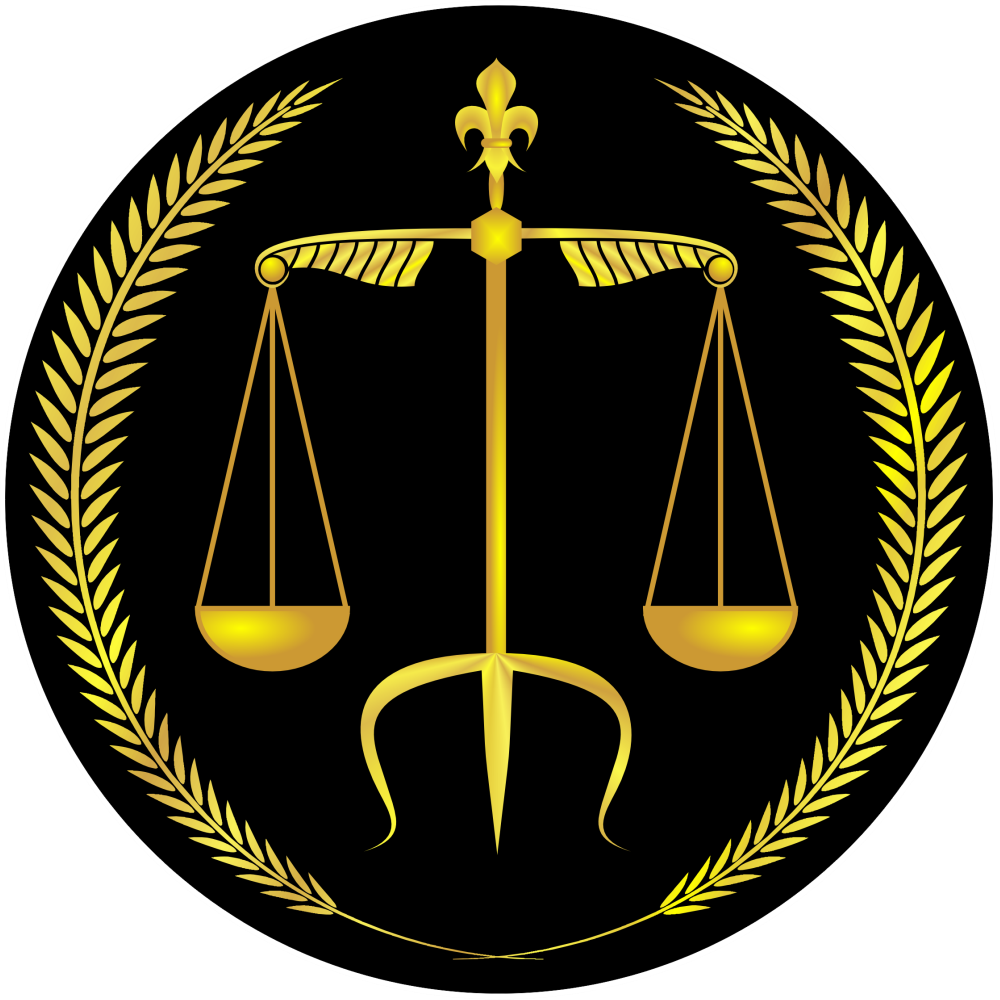Information Warfare: Past, Present and Future
In an era where information travels at the speed of light, understanding the nuances of information warfare is not just important—it’s imperative. But what exactly is information warfare? At its core, it’s the strategic use of information to gain a competitive edge or influence public perception. As we navigate through an increasingly digital landscape, the stakes have never been higher. With terms like disinformation and misinformation entering our everyday vocabulary, recognizing their definitions becomes crucial for safeguarding democracy and personal freedoms.
Throughout history, propaganda has evolved dramatically. From leaflets dropped during wars to today’s sophisticated AI-driven campaigns on social media platforms, propaganda means so much more than mere persuasion; it is a potent tool for shaping narratives and manipulating thoughts. The definition of propaganda has expanded in this digital age to encompass a wide range of techniques designed to influence opinions and behaviours. As we grapple with these evolving concepts, we must ask ourselves—what do these lies mean for our society? How can one discern between truth and deception amid the noise? These questions are central in discussions about modern conflicts and geopolitics.
This article will delve into the tumultuous journey of information warfare—from its roots in historical battles to its modern implications heightened by artificial intelligence. We will explore key components such as cyberattacks, psychological tactics, and notable examples that demonstrate how both state-led and grassroots campaigns wield uncanny power over public opinion. By examining propaganda examples throughout history and analyzing current disinformation vs misinformation trends, we aim to provide a comprehensive understanding of this complex topic.

Defining Information Warfare
Information warfare can be broadly defined as the strategic use of information to gain a competitive advantage, disrupt the coherence of an opponent’s operations, or influence public perception. This rapidly evolving landscape encompasses a range of tactics designed to manipulate narratives, disseminate lies, and exploit vulnerabilities in communication systems. The definition of information warfare extends beyond traditional military contexts; in today’s interconnected world, it infiltrates corporate realms, social movements, and even personal interactions.
At its core, the essence of information warfare lies in its ability to control perceptions and actions through targeted messaging—a prominent example being propaganda. Propaganda means shaping public opinion by presenting selective truths while obscuring inconvenient facts. In times of conflict or economic strife, nations may deploy various propaganda examples that illustrate their ideological frameworks or justify particular actions to garner domestic support. From simple leaflets dropped during World War II to sophisticated digital campaigns run on social media platforms today, such efforts highlight how manipulating information can sway large audiences with little more than cleverly crafted narratives.
Moreover, disinformation plays a significant role within the realm of information warfare—essentially operating as a modern incarnation of misinformation. While misinformation refers to false or misleading content shared without ill intent, disinformation involves spreading such inaccuracies purposefully to deceive others. Understanding this distinction is vital for those aiming to combat these issues effectively. The misinformation meaning has gained prominence in recent years, highlighting the casual sharing of wrong information that can have serious consequences when amplified through social networks.
With advances coming at breakneck speed in our digital age, recognizing what constitutes information warfare enables one to remain vigilant against its many faces. As we navigate these turbulent waters filled with differing perspectives on truthfulness and honesty—like exploring the meaning of lies—the need for media literacy becomes imperative. By honing tools to critically evaluate sources and cross-reference facts before accepting them as real, individuals can build necessary defences against manipulation and misinformation alike.
Growing Importance in Modern Conflicts and Geopolitics
As we delve into the complexities of contemporary conflicts, it becomes evident that information warfare has emerged as a critical battleground in geopolitics. With the ubiquity of digital technology and social media, nation-states are no longer just competing with conventional military strategies; they’re engaging in sophisticated campaigns to shape perceptions and influence public opinion. This evolving landscape underscores how vital information warfare is not merely a tactical component but a central pillar of modern conflict.
Take, for example, the fallout from Russian interference in the 2016 U.S. presidential election. The operation utilized propaganda tactics combining misinformation and disinformation designed to sow discord among the American populace. By exploiting social media platforms to spread lies—where multiple sources echoed falsehoods—the intention was to manipulate voter behaviour and undermine trust in democratic institutions. This case exemplifies what propaganda means in the digital age: a coordinated effort to shape public opinion through strategic information dissemination.
Furthermore, we’re witnessing an unprecedented rise in state-sponsored information operations across various regions. China’s efforts to control narratives surrounding its sovereignty claims over Taiwan through targeted misinformation campaigns, and North Korea’s cyber activities aimed at destabilizing both domestic dissent and international relations, illustrate that information warfare can induce fear, confusion, or even galvanize movements without ever firing a shot. These examples of propaganda demonstrate how nations are increasingly recognizing the enormous potential of information as a weapon, investing resources into honing their techniques to maintain or elevate their global standing.
As we navigate an era where artificial intelligence (AI) plays a pivotal role in amplifying both proactive and deceptive messaging, individuals and organizations alike must comprehend the implications these developments pose on civil liberties and democratic values. The rise of AI-powered deepfakes and sophisticated bot networks has added new dimensions to propaganda models, making it increasingly difficult to distinguish fact from fiction. This technological advancement in propaganda theory challenges our traditional understanding of information dissemination and reception.
Understanding what constitutes legitimate information versus background noise saturated with disinformation is paramount as this cycle of deception continually evolves. Empowering oneself through media literacy functions as our first line of defence against this insidious reality. By fostering digital literacy skills and promoting critical thinking, societies can better equip themselves to navigate the complex landscape of information warfare in the digital age.
Historical Background
Information warfare has roots that stretch back to the earliest forms of conflict, but its evolution into a critical tool of modern warfare began in earnest during the Civil War era. In this tumultuous period, both Union and Confederate forces engaged in early propaganda efforts that sought to manipulate public opinion and demoralize the enemy. For instance, newspapers became vehicles for disseminating lies and exaggerated accounts of battles—both to rally support at home and mislead their opponents. This initial taste of psychological operations laid a foundation for what would become a cornerstone in military strategy: understanding the power of information as both an asset and a weapon.
As technology advanced, so did the tactics employed during World Wars I and II. Notably, during WWI, governments launched comprehensive propaganda campaigns employing posters, films, and pamphlets—all designed to galvanize national sentiment against common enemies. The term “propaganda” itself became integral to wartime communication strategies; thus answering the question of “what is propaganda?”—a systematic approach used not only for motivating troops but also for shaping civilian perspectives on war. With sophisticated messaging crafted through years of research defined by models like Edward Bernays’ manipulation theory, these efforts went far beyond mere demonization—they were designed to resonate emotionally with audiences.
The Battle of Midway represents another significant moment where information warfare came to prominence. Through clever use of intelligence-gathering techniques such as code-breaking (the famous Operation Magic), U.S. Navy cryptographers managed to decipher Japanese plans ahead of time. This pivotal victory was not solely due to conventional combat but emerged from an effective blend of military prowess underpinned by superior information management strategies—a true testament to how crucial insight can turn the tide in high-stakes situations.
In today’s interconnected landscape, it is essential to reflect on these historical lessons when engaging with contemporary issues surrounding disinformation and propaganda in conflicts worldwide. As global adversaries continue developing increasingly sophisticated methods to manipulate truths—embedding their narratives within social media feeds or leading cyberattacks—it becomes imperative for individuals, organizations, and nations alike to appreciate how past wars waged on information have shaped present realities and will inform future countermeasures against misinformation.
The historical progression of information warfare underscores the importance of propaganda and information operations throughout time. From crude leaflets to sophisticated digital campaigns, the evolution of propaganda models reflects broader technological and societal changes. Understanding this history is crucial for developing effective propaganda theories and strategies in the modern era, where the lines between information, misinformation, and disinformation are increasingly blurred.

Origins in the Civil War Era
The seeds of information warfare were sown during the tumultuous years of the American Civil War. This period marked a dramatic transformation in how military leaders recognized and exploited the power of information—or more accurately, misinformation. Commanders such as General Ulysses S. Grant and Confederate President Jefferson Davis used newspapers to shape public perception of their respective causes. In many instances, they employed propaganda as a strategic weapon to rally support or undermine enemy morale, laying the groundwork for what we now recognize as modern information warfare.
One notable example is the use of “blockade runners” by the Confederacy, who not only smuggled goods past Union blockades but also transported misleading accounts that twisted narratives in favour of Southern resilience. These reports often exaggerated successes or minimized defeats, contributing to a sense of invincibility among Confederate supporters while attempting to sow doubt among Northern ranks. The blatant manipulation of facts serves as a stark reminder that lies have always held significant power in shaping opinions and mobilizing entire populations.
Moreover, both sides utilized intelligence operations to gain advantages over each other—whether through spying or intercepting dispatches to gauge troop movements and strategies. The phenomenon of espionage represented an early form of psychological warfare; possessing knowledge about an opponent’s decisions can be just as crucial as physical victories on the battlefield. This interplay between information gathering and offensive action set a precedent for future conflicts where command-and-control tactics would rely heavily on managing not just military resources but also perceptions, beliefs, and narratives.
As we look back on this formative era, it becomes clear that understanding the definition of propaganda has significantly evolved since then—it’s no longer limited to mere pamphlets or speeches but includes sophisticated digital methods such as social media manipulation today. However, at its core remains an enduring truth: shaping reality through crafted messages was crucial even before artificial intelligence entered the fray, highlighting a long-standing relationship between conflict and communication that continues to affect us today.
The Civil War era provides numerous examples of propaganda that illustrate the early development of information warfare techniques. From manipulated battlefield reports to carefully crafted speeches, these historical instances demonstrate what propaganda means in a practical sense. They also highlight the importance of propaganda and information operations in shaping public opinion and influencing the course of conflicts. By studying these early forms of information warfare, we can better understand the roots of modern propaganda theory and its application in contemporary geopolitical struggles.
Evolution through World Wars I and II
The concept of information warfare underwent significant evolution during the tumultuous periods of World War I and II. In WWI, propaganda became a critical tool to bolster morale at home and demonize the enemy. Governments harnessed emerging mass communication channels, such as newspapers, posters, and films, to disseminate messages aimed at shaping public perception. For instance, one notable example of propaganda was the British government’s “Your Country Needs You” campaign featuring Lord Kitchener’s iconic poster urging men to enlist. The effective use of imagery and catchy slogans exemplified how nations embraced information tactics not just for military advantage but also to create a unified national sentiment.
As the world transitioned into WWII, the stakes of information manipulation only heightened. Both Allied and Axis powers recognized that controlling narratives could be as decisive as military might on the battlefield. This era saw an intensification of psychological warfare strategies where disinformation campaigns were employed more systematically. The infamous Operation Bodyguard aimed to deceive German forces about the location and timing of the D-Day landings in Normandy, showcasing that misinformation could be strategically vital in warfare outcomes. Additionally, movies like “Why We Fight” were produced by Hollywood under government directives to educate soldiers while simultaneously propagating pro-war sentiments back home.
During these global conflicts, we also witnessed early forms of electronic warfare beginning to surface. Signal intelligence played a crucial role; for example, Allied cryptanalysts famously deciphered the Enigma machine codes used by Nazi Germany. By breaking this cypher, they gained invaluable insights into enemy plans—a pivotal moment in their war efforts—and highlighted how technology could enhance informational advantages over adversaries. As countries realized that mastering information could tilt the scales in favour of military success or failure, they began investing significantly in intelligence-gathering operations—an investment that would forge modern methods of espionage still prevalent today.
In summary, from World War I’s simplistic propaganda campaigns to World War II’s complex blend of psychological manipulation and electronic tactics, information warfare evolved tremendously over these two decades. This transformation not only changed military strategies but also laid the foundational principles that continue influencing contemporary practices today—where misinformation can spread rapidly via digital platforms and impact geopolitical dynamics on an unprecedented scale.
The evolution of propaganda during this period provides numerous examples of how information can be weaponized. From posters and films to radio broadcasts and leaflets, the propaganda models developed during these wars set the stage for modern information operations. Understanding what propaganda means in the context of these global conflicts helps illuminate its role in shaping public opinion and influencing wartime decision-making. These historical examples continue to inform propaganda theory and practice in the digital age, where the battle for hearts and minds is waged across new technological frontiers.
Pivotal Role in the Battle of Midway
The Battle of Midway, fought in June 1942, is often heralded as a turning point in the Pacific Theatre during World War II. It was not just a battle of ships and planes but also a masterclass in information warfare. The United States managed to turn the tide against Japan through effective intelligence gathering and strategic deception, showcasing how understanding and manipulating information can drastically alter military outcomes. U.S. codebreakers had successfully deciphered Japanese naval codes, allowing them to anticipate their adversary’s movements and ultimately counter their plans for an ambush.
One significant element of this information warfare was how misinformation played a crucial role among Japanese ranks. Japan believed they had surprise on their side; however, by intercepting communications, American forces learned about Japan’s plan to attack Midway Island. This intelligence allowed Admiral Chester W. Nimitz to position his fleet advantageously and prepare for an unexpected assault when the Japanese launched their air strikes. In essence, American forces didn’t just rely on superior firepower but instead leveraged what would today be classified under propaganda and disinformation tactics: misguiding the enemy while using acquired knowledge for preemptive defence.
Furthermore, tactics such as feigned weaknesses were employed brilliantly at Midway. By leaving Midway seemingly unprotected or overestimating vulnerability levels deliberately, U.S. forces drew Japanese carriers into striking range without revealing full combat readiness until it was too late for Japan’s naval commanders to effectively respond. This manipulation of perceived strengths and weaknesses is akin to modern concepts seen in digital warfare—where narrative control often dictates battlefield success.
Ultimately, the decisive victory at Midway reaffirmed the importance of information dominance within military strategy while laying the groundwork for subsequent conflicts that leverage advanced technologies like artificial intelligence and cyber capabilities today. The lessons learned from this pivotal engagement continue to resonate throughout history as modern nations grapple with vulnerabilities related to propaganda methods, cybersecurity threats, misinformation, and digital literacy amid ongoing global tensions.
The Battle of Midway serves as a prime example of how information warfare can decisively influence military outcomes. It demonstrates the power of intelligence gathering, code-breaking, and strategic deception—all key components of modern information operations. By examining this historical case, we can better understand what propaganda means in a military context and how it intersects with broader strategic objectives. The tactics employed at Midway continue to inform propaganda theory and practice, highlighting the enduring importance of information control in warfare and geopolitics.
Types of Information Warfare
Information warfare has evolved into a multifaceted battleground that employs a variety of tactics, each serving unique objectives in the context of modern conflicts. One prominent type is psychological warfare, which is designed to influence the thoughts, beliefs, and behaviours of targeted audiences. This form can take many shapes—from nudging public opinion through orchestrated propaganda campaigns to instilling fear via disinformation. For instance, the tactic used by ISIS involved disseminating highly polished media featuring violent imagery and glorifying martyrdom, aiming to recruit followers while creating an unsettling narrative for opponents.
Another striking category is cyber warfare, where digital infrastructure becomes both a weapon and a target. State actors have leveraged hacking to disrupt their adversaries’ critical systems—think about how Russia allegedly targeted the Ukrainian power grid, causing widespread blackouts. Such actions exemplify not only technical exploits but also serve as psychological tools that erode trust and a sense of security within the affected nation. Moreover, cyber espionage falls under this umbrella; nations are increasingly utilizing AI-driven algorithms to analyze vast amounts of data at lightning speeds—another dimension that heightens cyber operations’ stakes.
In addition to these forms, economic information warfare involves targeting a country’s financial stability or economic reputation through misinformation campaigns that can lead to stock market volatility or diminished foreign investment confidence. An example would be the deliberate dissemination of false rumours regarding economic crises or diplomatic relations aimed at crippling enemy finances without resorting to traditional military approaches. Meanwhile, social media manipulation is taking on an even more pronounced role often coupled with propaganda techniques that muddy the waters of truth and deception—leading users down rabbit holes filled with lies meaning different things depending on one’s viewpoint. This multi-layered approach contributes significantly to shaping narratives in today’s politically charged environment.
Each type reflects deeply interconnected strategies focusing on manipulating perceptions while exploiting vulnerabilities inherent in human behaviour and technological infrastructures. As we continue exploring further dimensions in the arena of information warfare, it becomes clear that mastering these types could very well determine future outcomes not only in politics but also across global economies and societies at large.
These various types of information warfare demonstrate the diverse ways in which propaganda and information operations can be deployed in modern conflicts. From psychological manipulation to cyber attacks, each approach represents a different facet of what propaganda means in the digital age. By understanding these different types, we can better analyze propaganda examples in contemporary contexts and develop more effective strategies for countering disinformation and misinformation. The evolution of these tactics also highlights the need for updated propaganda models and theories that account for the complexities of the digital information landscape.

Command and Control Warfare
Command and control warfare (C2W) refers to the deliberate targeting of an adversary’s command structures, communication networks, and decision-making processes. This form of information warfare disrupts not only direct operational capabilities but aims to unsettle the enemy’s entire strategic framework. By sabotaging these critical nodes, military forces can gain significant advantages in both speed and efficiency during conflicts. The definition of “command and control” encompasses various elements such as leadership, authority, assessment, and tactics—essentially the brain behind military operations.
Historical examples reveal the profound impact C2W has had on modern conflict. During the Gulf War in 1991, coalition forces used a strategy known as “Shock and Awe.” Here, they targeted Baghdad’s command centres using precision strikes to dismantle Iraqi leadership’s ability to effectively respond to threats. This was complemented by cyber operations that aimed at interrupting communications between branches of the Iraqi military. The devastating effectiveness of this technique lies in its ability to disorient commanders while simultaneously instilling fear among troops who rely on their leaders’ guidance.
Fast forward to today, artificial intelligence is revolutionizing C2W strategies further. With advanced algorithms capable of processing vast amounts of data in real time, military planners can better predict opponent decisions and actions based on established patterns. In essence, AI enhances situational awareness—empowering commanders with faster insight into enemy behaviours while enabling rapid adjustments to tactical or strategic plans. Additionally, it raises new questions about ethical implications: as we begin deploying AI-driven tools for C2W purposes, do we also run the risk of misinformation due to algorithmic biases?
In contemporary settings where information travels at lightning speed via digital channels like social media platforms, understanding how command-and-control structures function becomes essential not just for policymakers but also for casual internet users eager to grasp their roles within this environment. Cyberattacks targeting government systems or even localized infrastructure manifest C2W strategies outside traditional battlefields—a sign that while technology evolves quickly, so too must our awareness and aptitude regarding these manipulative practices within cyberspace.
Command and control warfare represents a sophisticated form of propaganda and information operations, where the goal is to disrupt the enemy’s ability to make decisions and coordinate actions. This approach demonstrates what propaganda means in a military context—not just influencing beliefs, but actively interfering with the opponent’s capacity to function effectively. By studying C2W tactics, we can gain insights into modern propaganda models and how they intersect with technological advancements like AI. This understanding is crucial for developing a robust propaganda theory that accounts for the complexities of contemporary information warfare.
Intelligence-Based Warfare
Intelligence-based warfare is a crucial element in the broader spectrum of information warfare, where the acquisition, analysis, and dissemination of information can dictate military strategies and outcomes. This form of warfare highlights the importance of gathering actionable intelligence to outmanoeuvre opponents, often utilizing both human intelligence (HUMINT) and signals intelligence (SIGINT). In recent years, advancements in artificial intelligence have transformed how intelligence is collected and processed. AI algorithms can sift through vast amounts of data from various sources, enabling quicker assessments that respond to emerging threats.
The evolution of intelligence operations has led to significant shifts in tactics on the battlefield. For example, during the Gulf War, U.S. forces employed sophisticated satellite reconnaissance to develop a comprehensive understanding of enemy positions. This capability allowed for targeted airstrikes that efficiently diminished Iraqi defences without heavy collateral damage—a classic illustration of how well-executed intelligence operations can change the course of the conflict. However, with these advances come ethical considerations about surveillance and privacy as states increasingly monitor digital communications as part of their intelligence gathering.
As we progress further into the digital age, intelligence-based warfare has expanded beyond traditional military contexts into areas such as corporate espionage and political manipulation—domains where disinformation plays a critical role. The revelations around state-sponsored cyber activities underscore this shift; consider Russia’s use of online misinformation campaigns during elections or China’s strategic collection of technological secrets from Western firms. These instances reflect not just an effort to gain tactical advantages but also an unsettling trend toward shaping narratives and public perceptions via propaganda—a tactic deeply intertwined with modern information operations.
In essence, understanding intelligence-based warfare is not merely about following historical precedents; it involves recognizing its pervasive influence on contemporary geopolitical dynamics. The move toward more automated systems using AI raises complex questions about accountability and reliability in decision-making processes influenced by large datasets that could be subject to misinterpretation or tampering—an ever-present risk when dealing with misinformation and propaganda schemes that distort truth for strategic gain. As we navigate this terrain characterized by rapid technological advancements and shifting power balances, maintaining robust protocols for verification becomes essential in countering deceptive narratives that threaten societal integrity.
Intelligence-based warfare exemplifies how information can be weaponized in modern conflicts. It demonstrates what propaganda means in an era of big data and AI-driven analysis, where the ability to collect and interpret vast amounts of information can provide a decisive advantage. This form of warfare relies heavily on propaganda and information operations to shape perceptions and influence decision-making at the highest levels. By studying intelligence-based warfare, we can develop more sophisticated propaganda models that account for the role of advanced technologies in information gathering and dissemination. This understanding is crucial for developing effective countermeasures against disinformation and misinformation in both military and civilian contexts.

Electronic Warfare
Electronic warfare (EW) represents a sophisticated domain of information warfare, incorporating the use of electromagnetic energy to disrupt, deceive, and manipulate enemy systems. Its roots can be traced back to World War II when advances in radar and radio communications prompted new tactics aimed at disabling enemy detection capabilities. The evolution of electronic warfare has accelerated with advancements in technology, particularly in an era where artificial intelligence plays an ever-increasing role. As we delve deeper into this subject, it’s crucial to understand not just the methods employed but also how these techniques redefine the landscape of modern combat.
At its core, electronic warfare operates through three fundamental components: electronic attack, electronic protection, and electronic support. The electronic attack involves jamming or disrupting enemy signals to impair their navigation or communication abilities; for instance, during the 1991 Gulf War, U.S. forces extensively employed jamming technologies against Iraqi radar systems. Electronic protection seeks to safeguard friendly communications from such disruptions while ensuring operational integrity; consider cybersecurity measures that latch onto encryption methods to shield sensitive data from interception.
Moreover, as conflicts modernize into digital realms, phenomena such as “signal intelligence” (SIGINT) become paramount. By intercepting signals—from cellphone conversations to satellite communications—adversaries can gather valuable insights about strategic manoeuvres and troop movements. The proliferation of consumer-level drones equipped with sensors further expands the potential for surveillance and reconnaissance operations on the battlefield. Engaging in such vulnerability assessments highlights not only military prowess but also heightens privacy concerns, especially within civilian contexts—an ethical challenge that looms large.
Furthermore, alongside traditional militaristic approaches lies an emerging emphasis on “cyber-electronic warfare,” integrating elements of cyberattacks into electronic operations. This strategy facilitates attacking critical infrastructure through means such as hacking into energy grids or disrupting financial institutions via wireless communication channels. For example, the 2007 cyber attacks on Estonia showcased how hackers could leverage both electronic and cyber prowess to destabilize a nation without firing a single shot. As our world grows increasingly interconnected through smart devices and IoT ecosystems, understanding electronic warfare becomes imperative for digital marketers and cybersecurity professionals alike—not just as a tactic used by states but also as an insight into safeguarding against potential adversities in our frontiers.
Electronic warfare represents a highly technical form of information warfare that has significant implications for propaganda and information operations. By disrupting or manipulating electronic communications, EW can directly impact the flow of information on the battlefield and beyond. This demonstrates what propaganda means in a technological context, where control over the electromagnetic spectrum can be as crucial as control over narratives. The integration of EW with cyber operations provides new avenues for propaganda dissemination and information control, highlighting the need for updated propaganda models that account for these technological realities. Understanding electronic warfare is essential for developing comprehensive propaganda theory in the digital age, where the lines between information, communication, and combat are increasingly blurred.

Staying Ahead in the Age of Information Warfare
As we’ve explored, information warfare plays a critical role in modern conflicts and geopolitical dynamics. From cybersecurity threats to propaganda and disinformation campaigns, understanding these concepts is essential. The definition of propaganda has evolved; it no longer just exists in textbooks but permeates our social media feeds and daily interactions. Lies, misinformation, and targeted narratives are part of our reality now more than ever.
The call for vigilance is urgent. We must equip ourselves with knowledge and digital literacy to discern fact from fiction. As artificial intelligence continues to reshape this landscape, staying informed about propaganda means opening our eyes to its implications on democracy and society as a whole. Engage with the tools available – enhance your media literacy, critically evaluate sources, and discuss these issues with others. In a world increasingly defined by information warfare, your awareness can make a difference today—and tomorrow.
To stay ahead in this age of information warfare, it’s crucial to understand the various propaganda models and theories that underpin modern disinformation campaigns. By studying historical propaganda examples and analyzing contemporary cases, we can better recognize the tactics used to manipulate public opinion. This knowledge empowers us to critically assess the information we encounter and make informed decisions.
Moreover, as the lines between propaganda, misinformation, and disinformation continue to blur, it’s essential to develop a nuanced understanding of what these terms mean in practice. Recognizing the difference between unintentional misinformation and deliberate disinformation can help us navigate the complex information landscape more effectively.
Education plays a vital role in combating the negative effects of information warfare. By promoting digital literacy and critical thinking skills, we can create a more resilient society that is less susceptible to manipulation. This includes teaching people how to verify sources, recognize bias, and understand the motivations behind different types of information campaigns.
Furthermore, staying ahead requires ongoing engagement with emerging technologies and their potential impacts on information dissemination. As AI and machine learning continue to advance, we must consider how these tools can be used both to spread and combat disinformation. By anticipating future developments in propaganda and information operations, we can better prepare ourselves and our institutions to face these challenges.
Ultimately, the battle against information warfare is not just about technology or policy—it’s about fostering a culture of critical thinking and informed citizenship. By working together to promote transparency, accountability, and ethical information practices, we can build a more resilient society that is better equipped to withstand the challenges of the digital age.
In conclusion, as we navigate this complex landscape of information warfare, let us remember that knowledge is our greatest defence. By understanding the history, tactics, and implications of propaganda and information operations, we empower ourselves to make informed decisions and contribute to a more transparent and democratic society. The future of information warfare may be uncertain, but our commitment to truth and critical thinking can help us face whatever challenges lie ahead.

